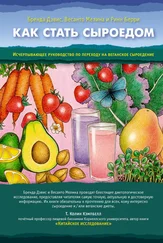101. Purohit V, Mishra S. The truth about artificial sweeteners – Are they good for diabetics? Indian Heart J . 2018; 70(1): 197–199.
102. Fagherazzi G, Gusto G, Affret A, et al. Chronic consumption of artificial sweetener in packets or tablets and type 2 diabetes risk: Evidence from the E3N-European Prospective Investigation into Cancer and Nutrition Study. Ann Nutr Metab . 2017; 70(1): 51–58.
103. Suez J, Korem T, Zeevi D, et al. Artificial sweeteners induce glucose intolerance by altering the gut microbiota. Nature . 2014; 514(7521): 181–186.
104. Talaei M, Wang Y-L, Yuan J-M, Pan A, Koh W-P. Meat, dietary heme iron, and risk of type 2 diabetes mellitus: The Singapore Chinese Health Study. Am J Epidemiol . 2017; 186(7): 824–833.
105. Osorio-Yáñez C, Gelaye B, Qiu C, et al. Maternal intake of fried foods and risk of gestational diabetes mellitus. Ann Epidemiol . 2017; 27(6): 384–390.e1.
106. Schumacher L, Abbott LC. Effects of methyl mercury exposure on pancreatic beta cell development and function. J Appl Toxicol . 2017; 37(1): 4–12.
107. Brouwer-Brolsma EM, Sluik D, Singh-Povel CM, Feskens EJM. Dairy product consumption is associated with pre-diabetes and newly diagnosed type 2 diabetes in the Lifelines Cohort Study. Br J Nutr . 2018; 119(04): 442–455.
108. Drouin-Chartier J-P, Brassard D, Tessier-Grenier M, et al. Systematic review of the association between dairy product consumption and risk of cardiovascular-related clinical outcomes. Adv Nutr . 2016; 7(6): 1026–1040.
109. Virtanen JK, Mursu J, Tuomainen T-P, et al. Egg consumption and risk of incident type 2 diabetes in men: The Kuopio Ischaemic Heart Disease Risk Factor Study. Am J Clin Nutr . 2015; 101(5): 1088–1096.
110. Djoussé L, Petrone AB, Hickson DA, et al. Egg consumption and risk of type 2 diabetes among African Americans: The Jackson Heart Study. Clin Nutr . 2016; 35(3): 679–684.
111. Jang J, Shin M-J, Kim OY, Park K. Longitudinal association between egg consumption and the risk of cardiovascular disease: Interaction with type 2 diabetes mellitus. Nutr Diabetes . 2018; 8(1): 20.
112. Hu EA, Pan A, Malik V, Sun Q. White rice consumption and risk of type 2 diabetes: meta-analysis and systematic review. BMJ . 2012; 344: e1454.
113. Zhou J, Sheng J, Fan Y, et al. Dietary patterns, dietary intakes and the risk of type 2 diabetes: Results from the Hefei Nutrition and Health Study. Int J Food Sci Nutr . 2018: 1–9. (epub ahead of print).
114. AlEssa HB, Bhupathiraju SN, Malik VS, et al. Carbohydrate quality and quantity and risk of type 2 diabetes in US women. Am J Clin Nutr . 2015; 102(6): 1543–1553.
115. Malik VS, Popkin BM, Bray GA, et al. Sugar-sweetened beverages and risk of metabolic syndrome and type 2 diabetes: a meta-analysis. Diabetes Care . 2010; 33(11): 2477–2483.
116. Medina-Remón A, Kirwan R, Lamuela-Raventós RM, Estruch R. Dietary patterns and the risk of obesity, type 2 diabetes mellitus, cardiovascular diseases, asthma, and neurodegenerative diseases. Crit Rev Food Sci Nutr . 2018; 58(2): 262–296.
117. Schwingshackl L, Hoffmann G. Diet quality as assessed by the healthy eating index, the alternate healthy eating index, the dietary approaches to stop hypertension score, and health outcomes: A systematic review and meta-analysis of cohort studies. J Acad Nutr Diet . 2015; 115(5): 780–800.e5.
118. Odegaard AO, Koh WP, Yuan J-M, Gross MD, Pereira MA. Western-style fast food intake and cardiometabolic risk in an Eastern country. Circulation . 2012; 126(2): 182–188.
119. Mezuk B, Li X, Cederin K, et al. Beyond Access: characteristics of the food environment and risk of diabetes. Am J Epidemiol . 2016; 183(12): 1129–1137.
120. Bao W, Tobias DK, Olsen SF, Zhang C. Pre-pregnancy fried food consumption and the risk of gestational diabetes mellitus: a prospective cohort study. Diabetologia . 2014; 57(12): 2485–2491.
Глава 4
1. World Health Organization. Obesity and Overweight Factsheet. 2003. URL: https://www.who.int/dietphysicalactivity/ media/en/gsfs_obesity.pdf. Accessed January 21, 2019.
2. Clifton P. Assessing the evidence for weight loss strategies in people with and without type 2 diabetes. World J Diabetes . 2017; 8(10): 440–454.
3. Rehackova L, Araújo-Soares V, Adamson AJ, et al. Acceptability of a very-low-energy diet in type 2 diabetes: patient experiences and behavior regulation. Diabet Med . 2017; 34(11): 1554–1567.
4. Tonstad S, Butler T, Yan R, Fraser GE. Type of vegetarian diet, body weight, and prevalence of type 2 diabetes. Diabetes Care . 2009; 32(5): 791–796.
5. Spencer EA, Appleby PN, Davey GK, Key TJ. Diet and body mass index in 38000 EPIC-Oxford meat-eaters, fish-eaters, vegetarians and vegans. Int J Obes . 2003; 27(6): 728–734.
6. Jackson AS, Ellis KJ, McFarlin BK, Sailors MH, Bray MS. Body mass index bias in defining obesity of diverse young adults: The Training Intervention and Genetics of Exercise Response (TIGER) Study. Br J Nutr . 2009; 102(07): 1084.
7. Campbell MC, Tishkoff SA. African genetic diversity: implications for human demographic history, modern human origins, and complex disease mapping. Annu Rev Genomics Hum Genet . 2008; 9(1): 403–433.
8. Shiwaku K, Anuurad E, Enkhmaa B, et al. Overweight Japanese with body mass indexes of 23.0–24.9 have higher risks for obesity-associated disorders: a comparison of Japanese and Mongolians. Int J Obes Relat Metab Disord . 2004; 28(1): 152–158.
9. Gray LJ, Yates T, Davies MJ, et al. Defining obesity cut-off points for migrant South Asians. PLoS One . 2011; 6(10): 4–10.
10. Nishida C. Appropriate body-mass index for Asian populations and its implications for policy and intervention strategies. Lancet . 2004; 363(9403): 157–163.
11. Center for Health Statistics N. Table 53. Selected health conditions and risk factors, by age: United States, selected years 1988–1994 through 2015–2016; 2017. URL: https://www.cdc.gov/ nchs/hus/contents2017.htm#053. Accessed January 21, 2019.
12. Corsica JA, Pelchat ML. Food addiction: true or false? Curr Opin Gastroenterol . 2010; 26(2): 165–169.
13. Ifland JR, Preuss HG, Marcus MT, et al. Refined food addiction: a classic substance use disorder. Med Hypotheses . 2009; 72(5): 518–526.
14. Liu Y, von Deneen KM, Kobeissy FH, Gold MS. Food addiction and obesity: Evidence from bench to bedside. J Psychoactive Drugs . 2010; 42(2): 133–145.
15. Holtcamp W. Obesogens: An environmental link to obesity. Environ Health Perspect . 2012; 120(2): a62–68.
16. Grün F, Blumberg B. Minireview: The case for obesogens. Mol Endocrinol . 2009; 23(8): 1127–1134.
17. Janesick A, Blumberg B. Endocrine disrupting chemicals and the developmental programming of adipogenesis and obesity. Birth Defects Res C Embryo Today . 2011; 93(1): 34–50.
18. Darbre PD. Endocrine Disruptors and Obesity. Curr Obes Rep . 2017; 6(1): 18–27.
19. Chao A, Grey M, Whittemore R, et al. Examining the mediating roles of binge eating and emotional eating in the relationships between stress and metabolic abnormalities. J Behav Med . 2016; 39(2): 320–332.
20. Guerdjikova AI, Mori N, Casuto LS, McElroy SL. Binge Eating Disorder. Psychiatr Clin North Am . 2017; 40(2): 255–266.
21. Lim EL, Hollingsworth KG, Aribisala BS, et al. Reversal of type 2 diabetes: Normalization of beta cell function in association with decreased pancreas and liver triacylglycerol. Diabetologia . 2011; 54(10): 2506–2514.
Читать дальше
Конец ознакомительного отрывка
Купить книгу




![Карин Дина - Справочник сыроеда [Краткое руководство по питанию свежей растительной пищей]](/books/389267/karin-dina-spravochnik-syroeda-kratkoe-rukovodstvo-thumb.webp)







